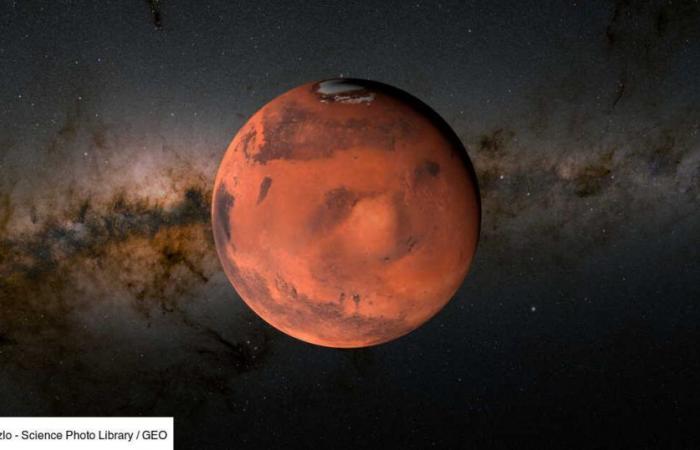Electrical outlets are rare on Mars. All equipment on site runs on batteries. This is why Chinese researchers tried to design a specific model for the red planet. The main idea was to ensure a constant source of energy on site.
To do this, a team from the University of Science and Technology of China sought to exploit the resources present directly on Mars to ensure long-term operation, indicates Interesting Engineering. Scientists have thus managed to use the planet’s atmosphere to transform it into fuel.
A complex atmosphere serving the charge/discharge cycle of a battery
“This approach significantly reduces the weight of the battery, making it more suitable for space missions”explain the researchers in a press release.
The most beautiful photos captured by Thomas Pesquet from space
In the Martian atmosphere, we find carbon dioxide (95.32%), nitrogen (2.7%), argon (1.6%), oxygen (0.13%) ) and carbon monoxide (0.08%). But apart from this complex distribution, one of the drawbacks from a technological point of view when designing a product intended for Mars is its temperature range which oscillates around 60°C between day and night.
But according to the study by Chinese researchers, the battery does not display classic behavior. When it is not in use, solar panels provide it with energy. But during its use, the electrodes interact with gases present on Mars to generate a chemical reaction generating electricity.
A specific battery structure to improve its operation
“Battery charging and discharging processes involve the formation and decomposition of carbon dioxide. lithiumwhile traces of oxygen and carbon monoxide in the Martian atmosphere act as reaction catalysts, significantly accelerating the kinetics of carbon dioxide conversion.”details the press release.
To optimize this mechanics, scientists designed a battery with a folded cellular structure, which increased the surface area for interaction with the Martian atmosphere and the integrated electrodes. With more electrode/atmosphere interactions, the efficiency and energy capacity of the battery are improved.
The model could withstand the planet’s severe temperature changes, and would work even when the temperature reaches 0°C. All with a high longevity performance since it is possible to use the battery continuously for months with a charge/discharge cycle of 1,375 hours (or a little over eight weeks).






